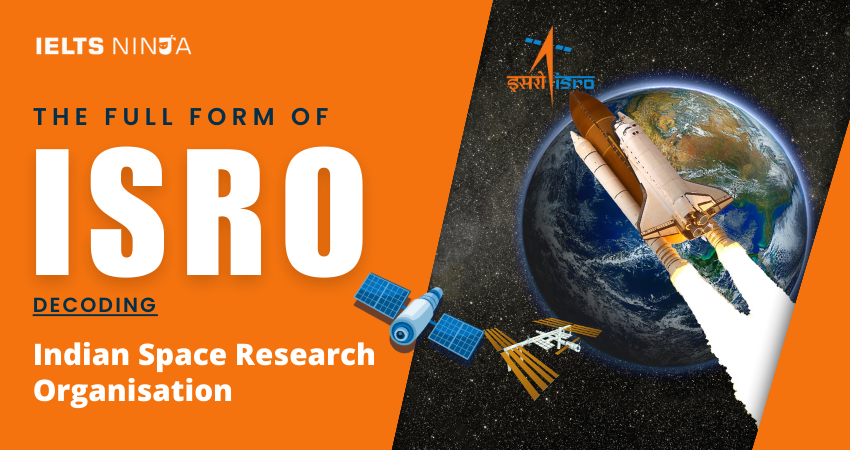In the domain of space exploration and technology, the full form of “ISRO” stands for the Indian Space Research Organisation. It is India’s premier space agency and is renowned for its remarkable achievements in space exploration, satellite technology, and space research. Founded in 1969, ISRO has evolved into a globally respected organization, contributing significantly to India’s technological advancements and its reputation in the international space community. In this comprehensive guide, we will explore the details of ISRO, its mission, objectives, key achievements, and its pivotal role in India’s space endeavors.
Overview of ISRO
The Indian Space Research Organisation (ISRO) is India’s national space agency responsible for the planning and execution of space missions, satellite development, and space research. It operates under the Department of Space, which reports directly to the Prime Minister of India. ISRO’s headquarters is located in Bengaluru, Karnataka.
Objectives of ISRO
ISRO’s primary objectives include:
- Space Exploration: To conduct space exploration missions and research, advancing scientific knowledge and understanding of space.
- Satellite Development: To design, develop, and launch satellites for various purposes, including communication, earth observation, and navigation.
- National Development: To utilize space technology for national development in areas such as agriculture, weather forecasting, disaster management, and telecommunication.
- Global Collaboration: To collaborate with international space agencies and organizations to further space research and technology.
ISROs Key Achievements
ISRO has achieved numerous milestones since its inception:
Aryabhata:
India’s first satellite, Aryabhata, was launched in 1975, marking the beginning of India’s space program.
Mars Orbiter Mission (Mangalyaan):
In 2013, ISRO successfully launched its first interplanetary mission, Mangalyaan, making India the fourth country in the world to reach Mars and the first to do so on its maiden attempt.
Chandrayaan Missions:
ISRO’s Chandrayaan-1 and Chandrayaan-2 missions to the Moon have provided valuable insights into lunar geology and water ice.
NavIC:
The Navigation with Indian Constellation (NavIC) is India’s regional satellite navigation system, providing accurate positioning and timing information.
Record Satellite Launches:
ISRO has set records for launching multiple satellites in a single mission, offering cost-effective solutions for international clients.
International Collaboration:
ISRO collaborates with NASA, ESA, and other international agencies on various missions and projects.
Also Read: Best online IELTS coaching & training academy
Significance of ISRO
ISRO plays a crucial role in India’s technological and economic development:
- Communication: ISRO’s satellite communication network facilitates telecommunication, broadcasting, and internet services across India.
- Earth Observation: Earth observation satellites aid in agriculture, disaster management, urban planning, and environmental monitoring.
- Navigation: The NavIC system enhances navigation and positioning accuracy, benefiting transportation, agriculture, and defense.
- Global Recognition: ISRO’s achievements have garnered global recognition, elevating India’s status in the international space community.
Future Endeavors – ISRO
ISRO continues to pursue ambitious space missions, including lunar and interplanetary exploration, satellite launches, and advancements in space technology. Its commitment to scientific research and innovation ensures that it remains at the forefront of space exploration.
Conclusion
The Indian Space Research Organisation (ISRO) is an exemplar of India’s capabilities in space technology and research. With a rich history of accomplishments and a commitment to furthering scientific knowledge and national development, ISRO continues to inspire and contribute to India’s progress in space exploration and technology.








